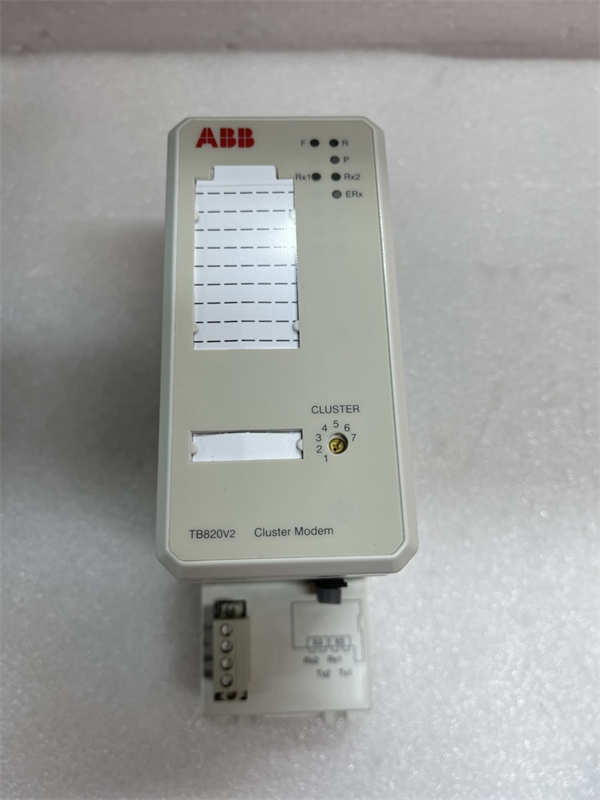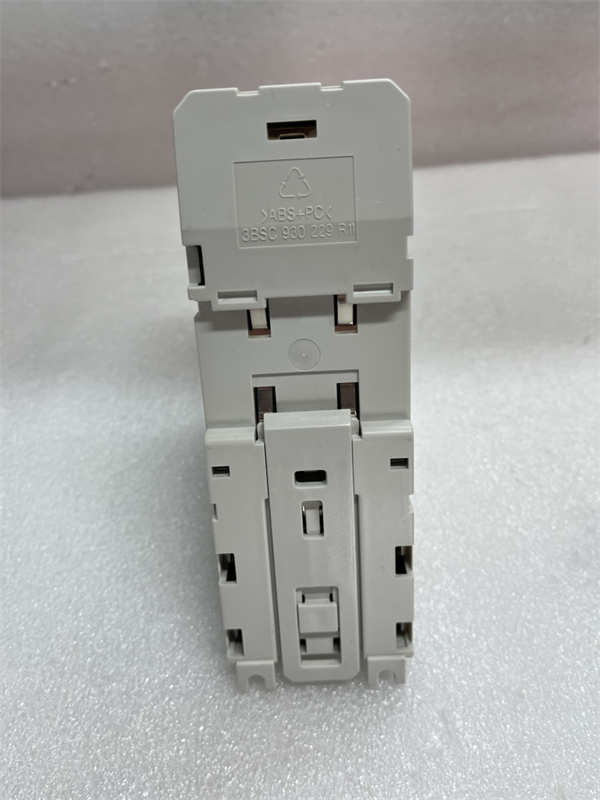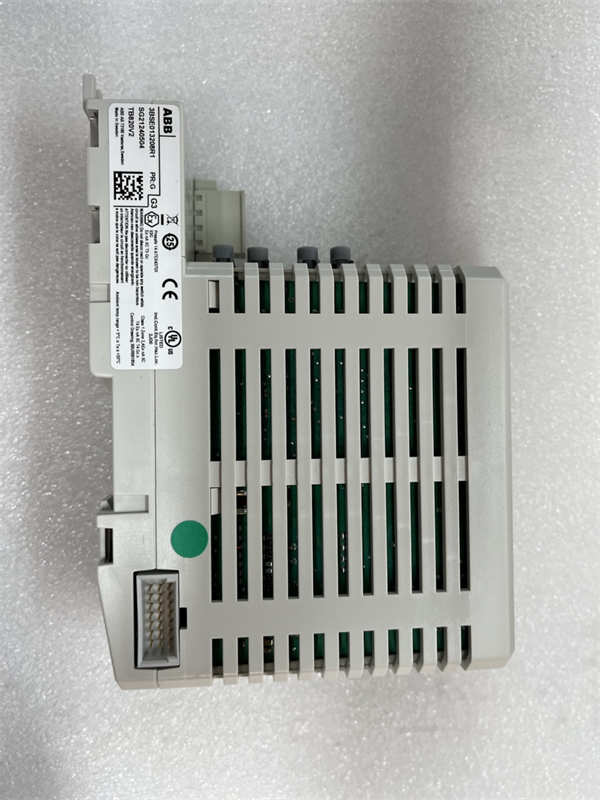Description
ABB TB820V2 3BSE013208R1: Fiber Optic Communication Module for Industrial Distributed I/O Systems
The ABB TB820V2 3BSE013208R1 is a high-performance fiber optic communication module designed for ABB’s S800 I/O system, enabling reliable and high-speed data transmission in distributed industrial automation setups. As a core component of the Module Bus architecture, the TB820V2 bridges local I/O modules with remote clusters via fiber optic links, ensuring immunity to electromagnetic interference (EMI) and supporting long-distance communication (up to 20 km). Ideal for harsh environments, this module is widely used in manufacturing, energy, water treatment, and marine industries.
1. Product Description
The TB820V2 serves as a fiber optic gateway for ABB’s S800 I/O system, supporting both electrical (local) and fiber optic (remote) Module Bus connections. It enables seamless integration of up to 12 local I/O modules and expands the system to 7 remote clusters via fiber optic links. Key features include:
- Dual Interface Support: Electrical (local) and fiber optic (remote) ports for hybrid network configurations.
- EMI Immunity: Fiber optic links eliminate signal degradation in high-noise environments.
- Scalability: Configurable cluster addressing (1–7) for flexible system expansion.
- Redundancy Ready: Supports Module Bus redundancy (with system configuration) for enhanced reliability.
2. Product Parameters
| Parameter | Specification |
|---|---|
| Type | Fiber Optic Module Bus Modem |
| Voltage | 24V DC (±10%) |
| Current Consumption | 100 mA (typical) |
| Interfaces | 2x Fiber Optic Ports (Module Bus) + 1x Electrical Bus (local I/O) |
| Max. Local I/O Modules | 12 (via electrical bus) |
| Max. Remote Clusters | 7 (via fiber optic links) |
| Communication Range | Fiber: Up to 20 km (multimode/single-mode) |
| Operating Temperature | 0°C to +55°C (vertical mounting: up to 40°C) |
| Mounting | DIN Rail (IP20 protection) |
| Certifications | CE, UL, ATEX (Zone 2), Marine (ABS, BV) |

TB820V2
3. Advantages and Features
- Reliable Long-Distance Communication: Fiber optic links reduce signal attenuation and EMI, ensuring stable data transfer in complex industrial settings.
- Flexible Clustering: Configurable cluster addressing (1–7) allows scalable deployment across large facilities.
- Redundancy Architecture: Supports dual Module Bus configuration (electrical/fiber) for 99.99% uptime in critical applications.
- Compact Design: 58 mm width saves 30% panel space compared to legacy solutions.
- Case Study: A German automotive plant reduced downtime by 25% using the TB820V2 to connect 50+ remote I/O clusters in a high-EMI welding shop. Fiber optic links eliminated signal errors, improving system reliability.
4. Application Areas and Cases
- Industries: Manufacturing, energy (power plants, renewables), water treatment, marine/shipbuilding.
- Scenarios: Distributed I/O systems, remote machine monitoring, and substation automation.
- Application Case: A Norwegian offshore wind farm deployed TB820V2 modules to connect 100+ sensors across 15 km of cabling. Fiber optic redundancy and EMI immunity ensured 99.8% data integrity in harsh offshore conditions.
5. Competitor Comparison
Compared to similar communication modules:
- Superior EMI Protection: Fiber optic links (vs. copper-based solutions in alternatives).
- Longer Communication Range: 20 km fiber support (vs. 1 km typical for electrical buses).
- Higher Cluster Density: 7 remote clusters (vs. 4–5 for most 竞品).
- Native Redundancy: Built-in support for dual Module Bus (no external hardware required).
TB820V2
6. Selection Recommendations
- System Compatibility: Ensure integration with ABB S800 I/O, AC500, or 800xA systems.
- Environment: Opt for fiber optic links in high-EMI, long-distance, or corrosive environments.
- Scalability: Choose the TB820V2 for systems requiring 7+ remote clusters (vs. electrical-only modules).
- Budget: Balance fiber optic benefits (reliability, distance) with upfront costs (fiber cabling investment).
7. Precautions
- Installation:
- Use ST/LC fiber connectors (single-mode for >2 km, multimode for short distances).
- Ensure proper grounding for the electrical bus; avoid bending fiber cables (minimum bend radius: 30 mm).
- Maintenance:
- Clean fiber connectors quarterly with lint-free wipes (avoid physical damage).
- Monitor cluster status via ABB’s Control Builder M (verify LED indicators: green=active, red=fault).
- Redundancy: Enable dual Module Bus (electrical + fiber) for SIL 2/3 applications (follow IEC 61508 guidelines).








